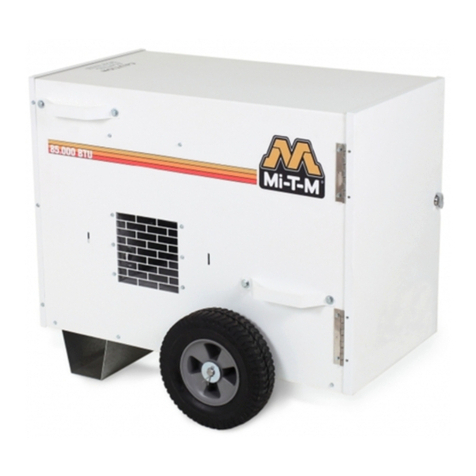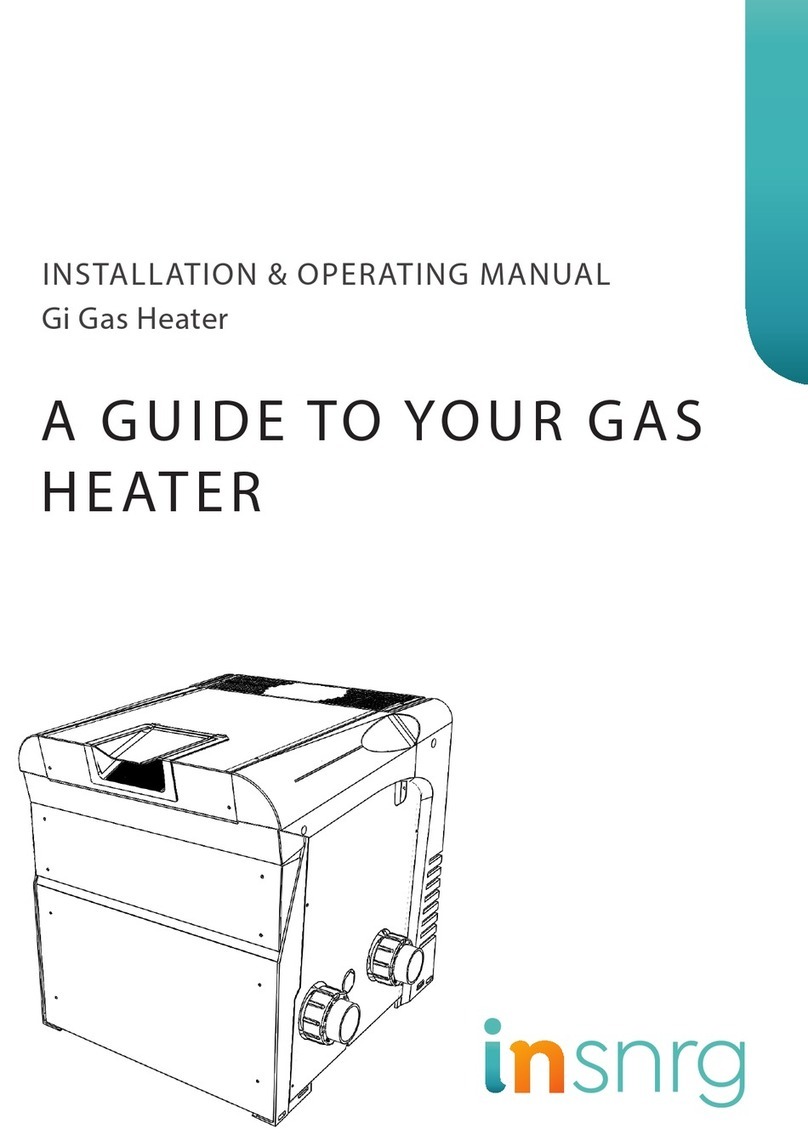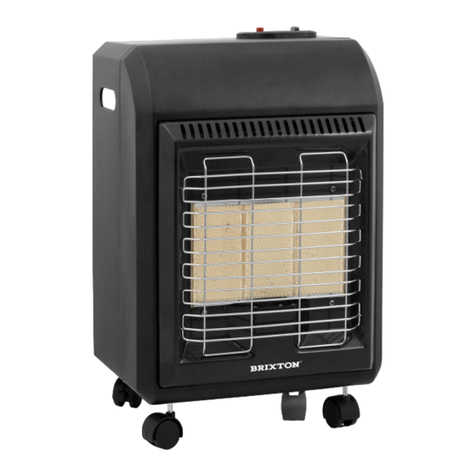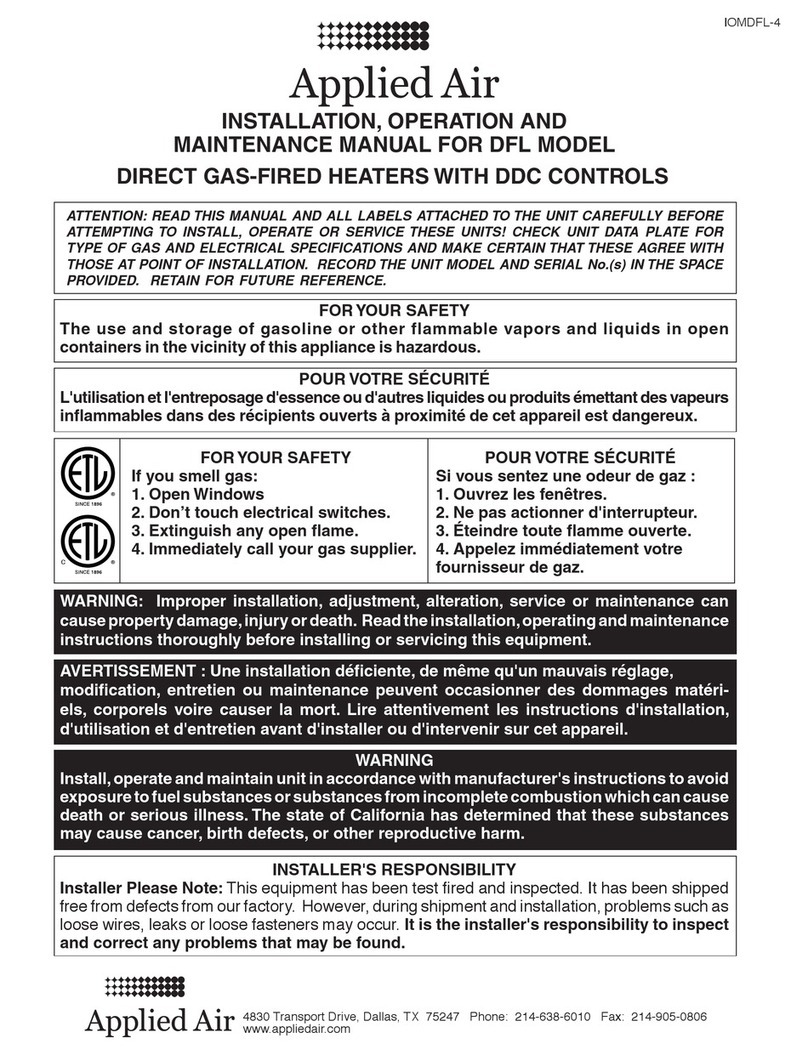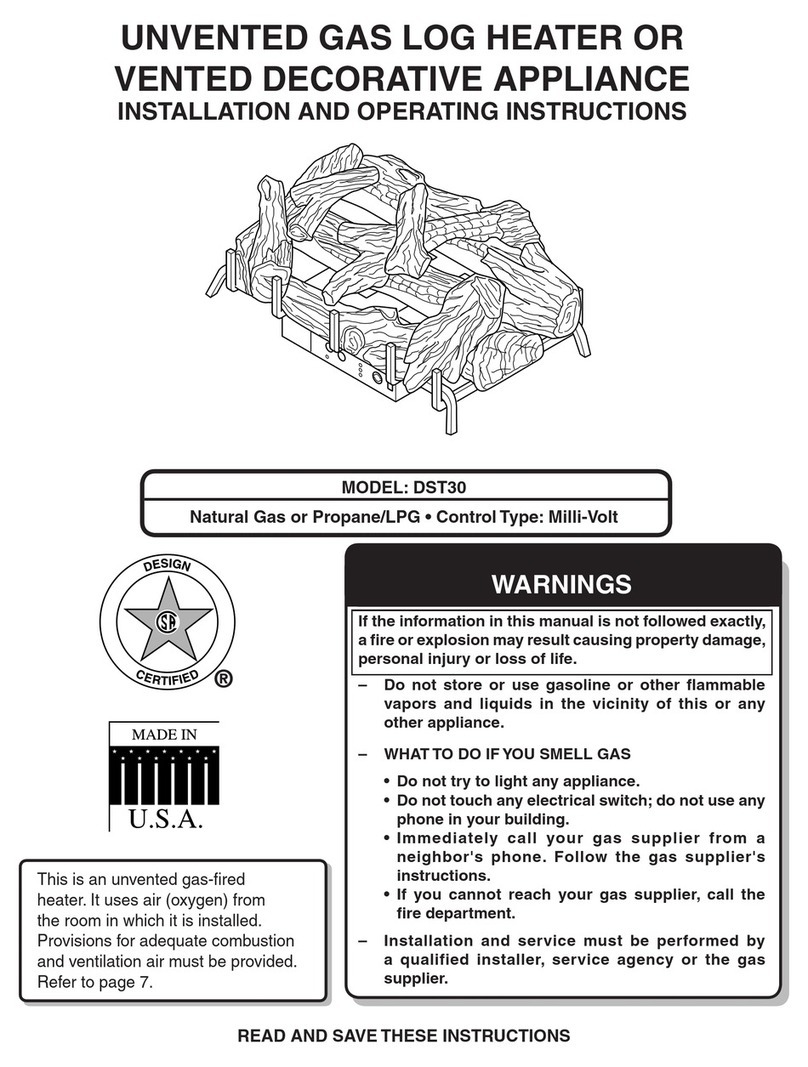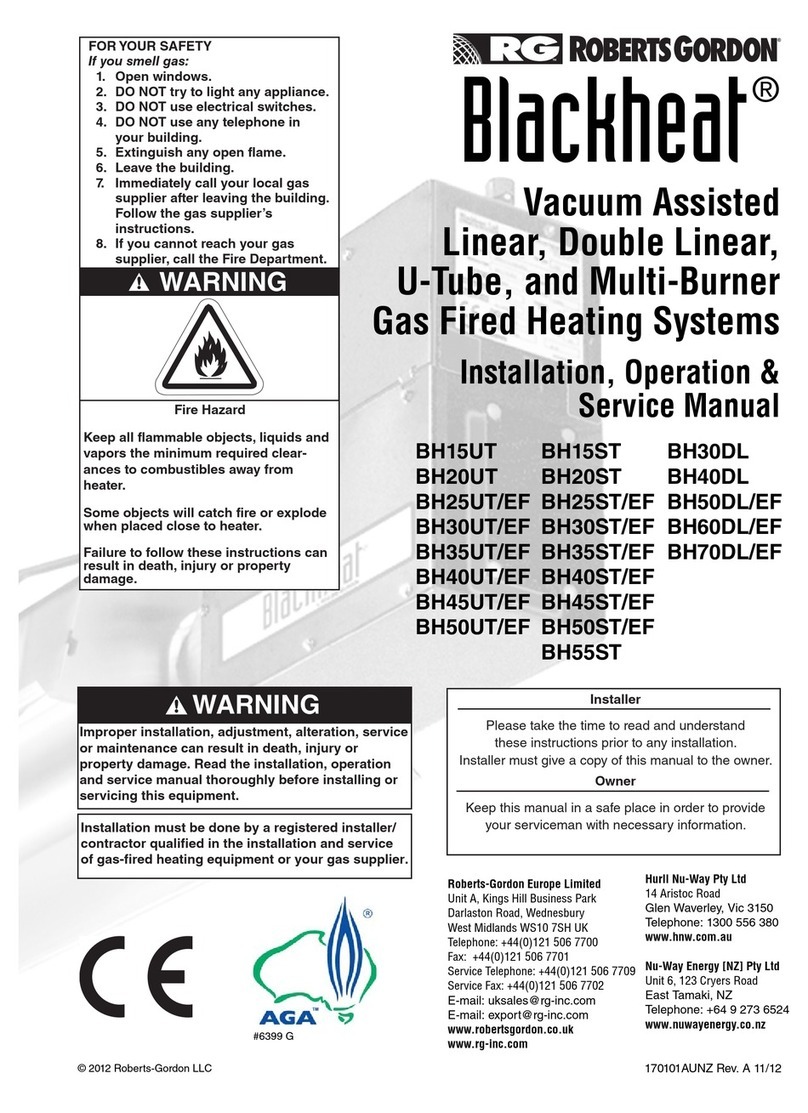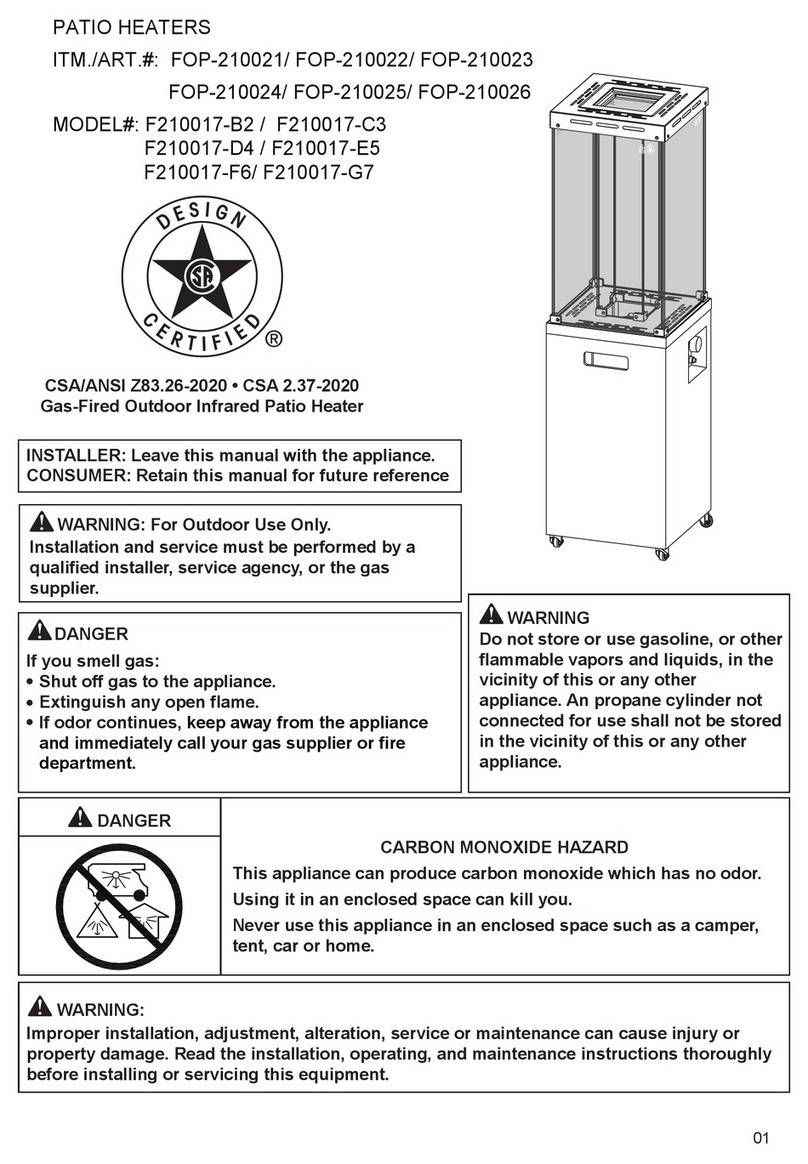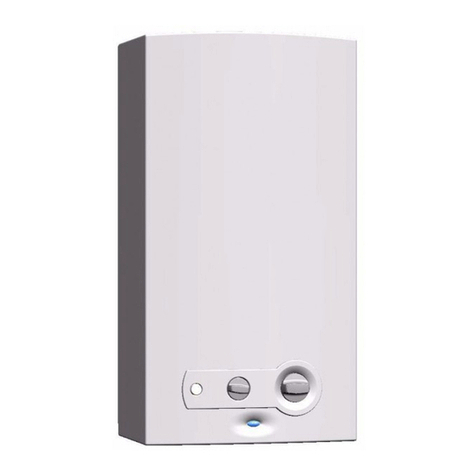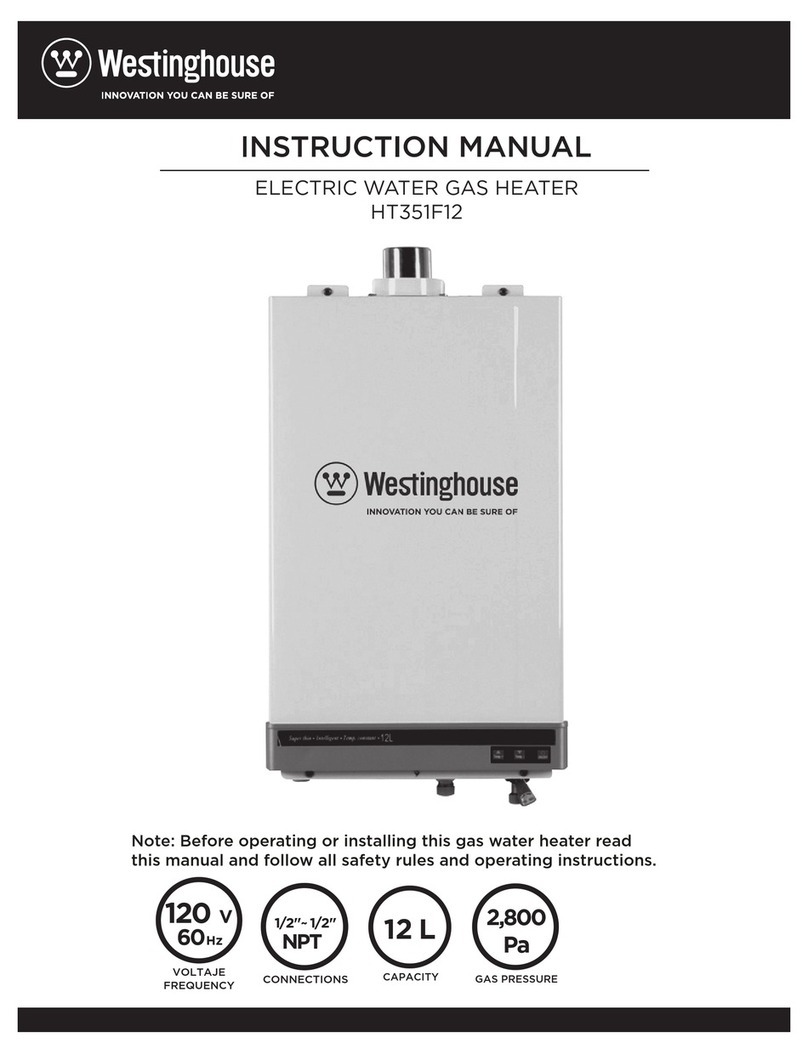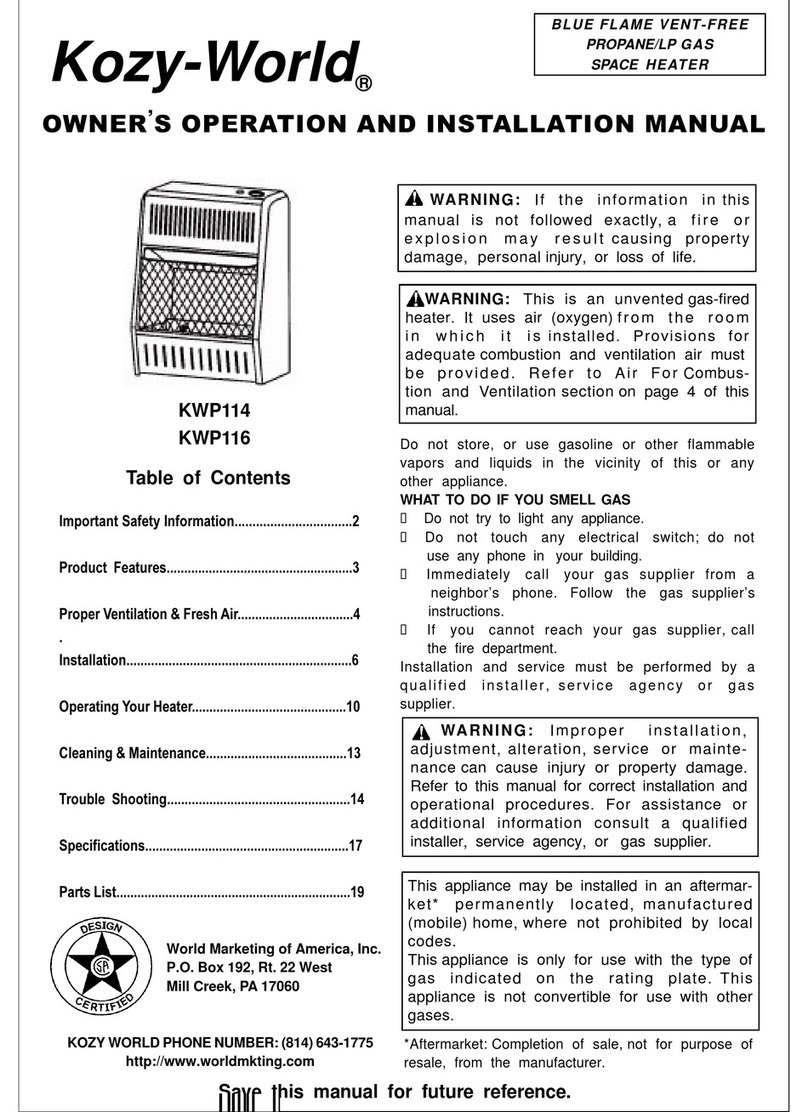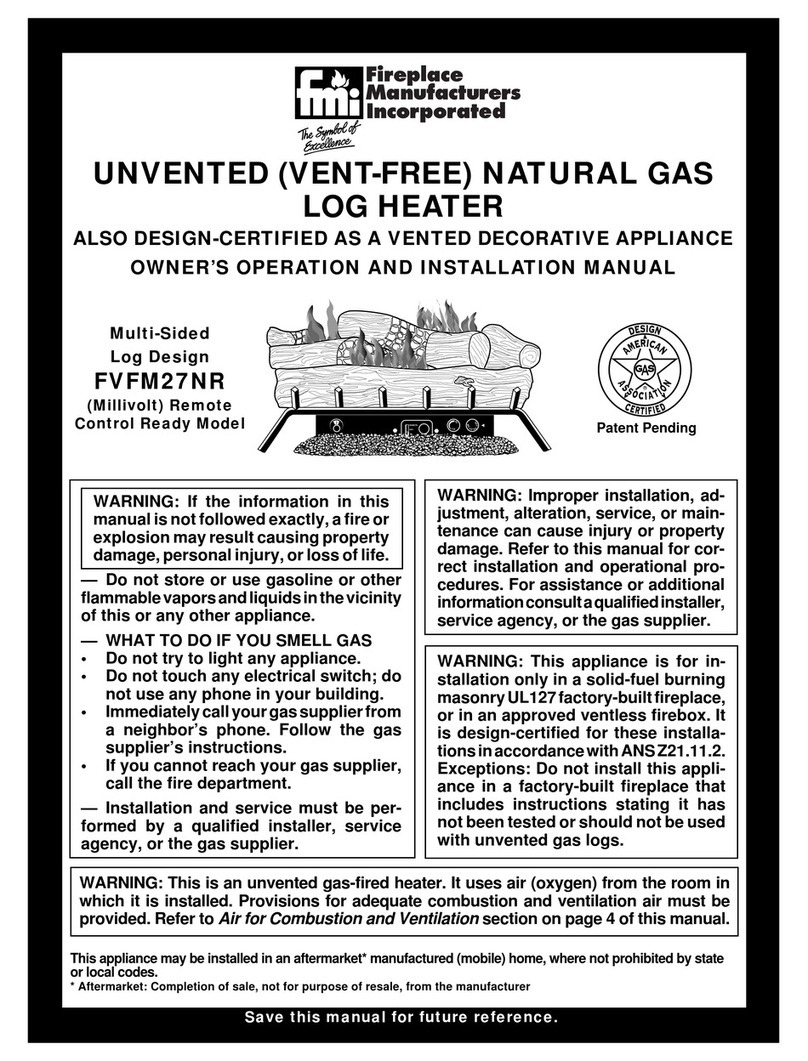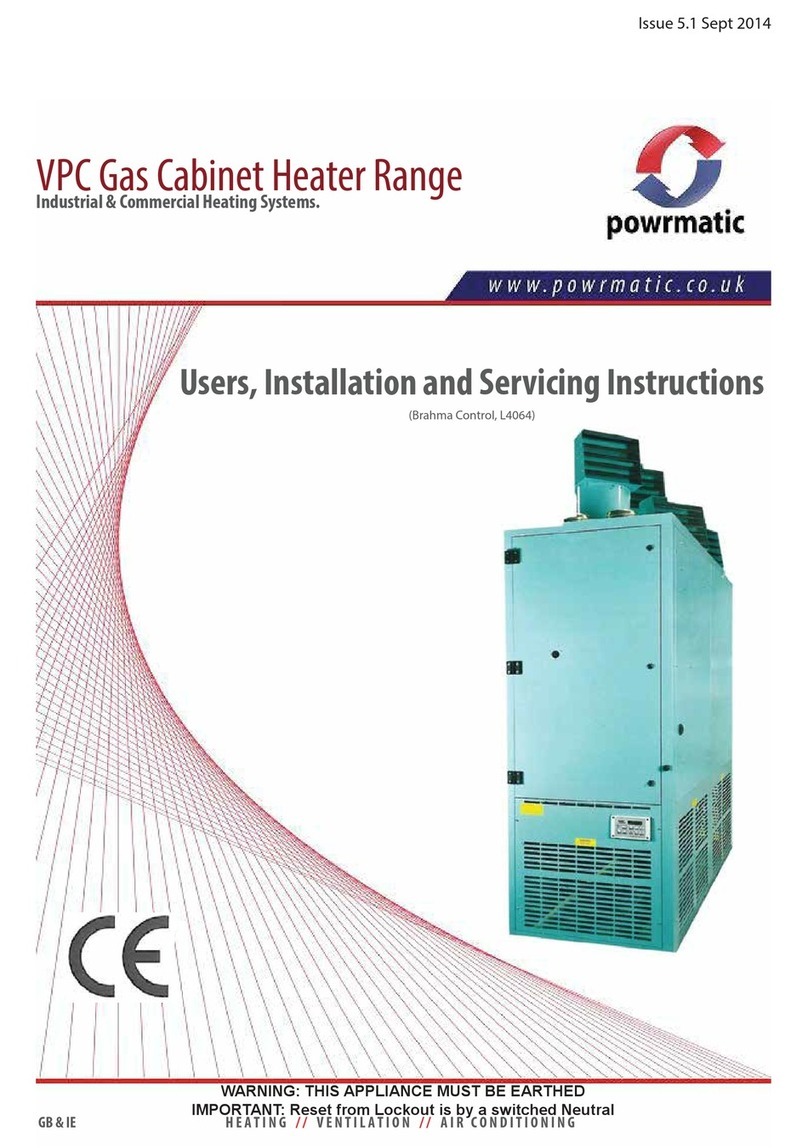FOR THE ENGINEER
STARTING UP THE APPLIANCE AND FINAL CHECKS
Start the appliance by following the directions given in section 3b,
“Usage”, checking that the appliance is working correctly. Pay spe-
cial attention to the colour of the flames ensuring there is no yellow-
ness which would indicate burner venturis blockedby insect matter.
Check the gas operating pressures with the heater under full power
at the inlet pressure nipple located on the right hand side of the
gas body valve stem. The pressure drop should not exceed 2.5 mb
below that specified in this manual.
Check the burner pressure with the heater at full load at the test
nipple located on the left hand side of the main gas valve body be-
low the main burner. These pressures must at least be equal those
specified in this manual in order to achieve the desired performan-
ce specified in this manual.
These gas water heaters are set in the factory for use with the gas
they are intended to burn. The gas for which each appliance is set
is indicated on the packaging and on the cover of the heater itself.
Check the flue for spillage: close all the doors and windows in the
room containing the water heater. If there are any fans or extrators
in the room then these must be turned on full. Light any otheropen
flued appliances such as fires of gas hobs. Turn the water heater
on by opening a hot tap on full burn and run for 5 minutes to allow
the flue to warm up.
Hold a smoke match to the side of the opening of the draught diver-
tor using an extended holder,making sure that the end of the match
is located centrally in the draught divertor.
The smoke should be pulled up the flue and not back into the room.
If spillage is detected, run the appliance for a further 10 minutes
and then repeat the test. If spillage is still detected then check the
flue for blockages, check that the correct flue terminal is fitted and
that the correct ventilation is fitted at a low and high level. Also
check the ventilation has not been blocked.
A.2.3. - LOOKING AFTER THE APPLIANCE
•PRECAUTIONS
–Against furring up (lime scale)
If the appliance is installed in an area with very hard water, with
time, the following may occur:
–A fall in the hot water temperature, or
–A reduction in the hot waterflow.
This means that the heat exchanger may be furred up, creating the
above situations
As the level of scale build up is proportional to the selected outlet
temperature, (the hotter the water the greater the scale build up)
In order to reduce scale build up it is recommended that the water
temperature required at the outlet is achieved by selecting the de-
sired temperature at the heater, and not by mixing cold water to hot
water in order to obtain the correct temperature i.e. for showering
purposes.
Note: Defurring/descaling should be carried out using proprietary
agent or dilute hydrochloric acid. It is recommended to circulate
the descaling fluid around the heat exchanger in order to speed up
the process. Depending on the amount of scale build up and the
strength of the descaling solution the time to totally descale could
be up two hours.
•MAINTENANCE
•MINIMUM ANNUAL MAINTENANCE
Gas water heaters are rugged pieces of equipment which are de-
signed to work for a long time with minimum maintenance require-
ments. The only regular maintenance required is the (annual) clea-
ning of the heating body and the burner. If the appliance is installed
in a caravan or boat it is essential this is done at the beginning of
each season.
•CLEANING THE MAIN BURNER
To carry out the annual cleaning of the burner, proceed as follows:
–Turn off the gas supply, remove the cover and remove the burner.
–Clean the surface of the burner heads gently with a brush. Then
blow through them to remove any particles of dust loosened du-
ring the brushing operation.
–Check the venturis for contamination from insects and spiders
webs.
•CLEANING THE HEAT EXCHANGER
To carry out the annual cleaning of the heating body, proceed as
follows:
–Turn off the gas supply
–Turn off the supply of water to the appliance by turning off the
appliance’s water inlet tap.
–Turn on all the hot water taps to empty all the pipes.
–Remove the heating body and clean it by gently brushing the fins.
Soot if found should be removed by washing, and the cause of
the sooting investigated.
•CLEANING THE PILOT
If the pilot light flame is yellow and the safety valve takes a long
time to open, this means that either the pilot injector or pilot burner
is partially blocked.
The pilot injector may be blocked with contaminants carried within
the gas, whilst the pilot burner is more likely to be contaminated by
insects (spiders / egg sacs)
N.B. No attempt should be made to clear blocked or partially blo-
cked pilot injectors by using wire. If blowing through the injector fails
to clear the restriction, then a new injector should be fitted.
When the pilot is working normally the flame should be a stable
blue coloured cone shape. To clean the pilot burner, proceed as
follows:
–Turn off the gas supply, remove the front cover. Remove the pilot
injector, by slackening the supply pipe nut first, and unscrewing
the pilot injector from the pilot burner
–Remove the contamination from within the pilot burner using
wire, and blow through to remove any further debris.
–Replace the pilot injector, ensuring that the washers are properly
fitted.












